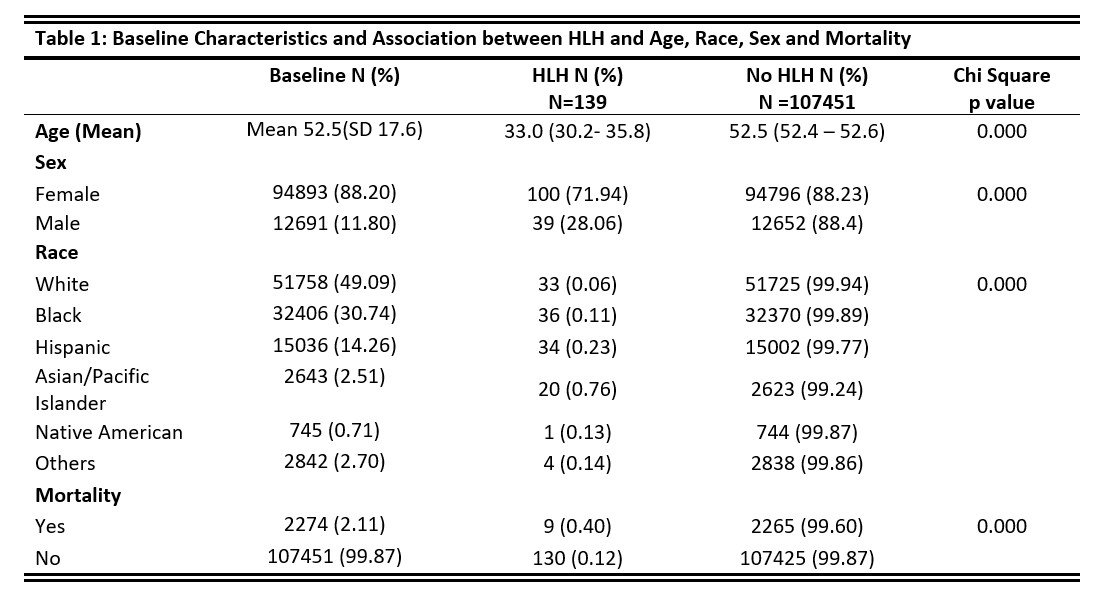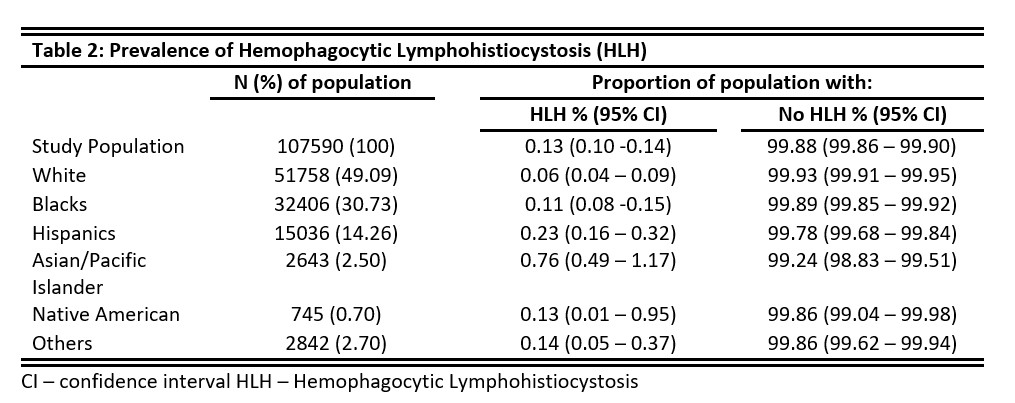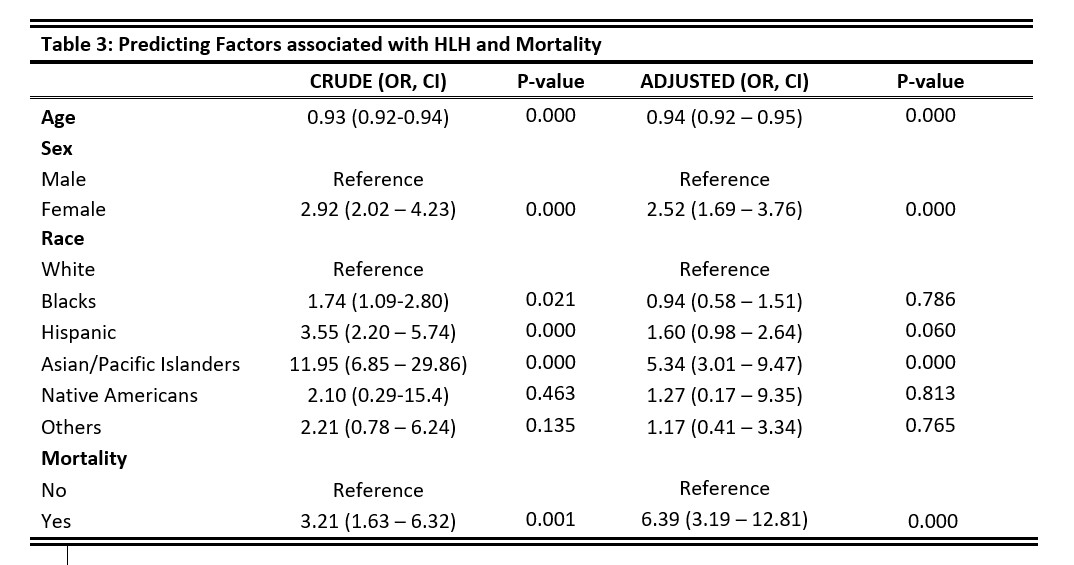Session Information
Session Type: Poster Session A
Session Time: 10:30AM-12:30PM
Background/Purpose: Systemic lupus erythematosus (SLE) complicated with hemophagocytic lymphohistiocystosis (HLH) can be life-threatening with mortality as high as 9.9%-10.5%. Estimates of the prevalence of HLH in SLE ranges from 0.9 up to 4.6%, with higher rates reported in racial minority populations, including African American (AA), Hispanic, and Asian American/Pacific Island (AAPI) people, compared to non-Hispanic White people. However, this disparity in prevalence might be decreasing as access to care and availability of treatments for SLE increase in these populations. This study aims to estimate the prevalence and factors predicting HLH in hospitalized patients with SLE.
Methods: A total of 107,590 patients with SLE from the 2018-2020 Nationwide Inpatient Sample database were included in this cross-sectional study. Baseline demographics, including age, sex, and race, were collected along with information on the diagnosis of HLH and mortality. Initial univariate associations between those with and without HLH were assessed using either Student’s t-test for continuous variables or chi-squared tests for categorical variables. Multivariable logistic regression was then used to assess for the association of factors with HLH after accounting for covariates.
Results: Of the 107,590 patients with SLE, 139 had a concurrent diagnosis of HLH for a prevalence of 0.13% [95% CI 0.10 – 0.14%]. An increased risk of HLH was observed in those who were younger, female, or who identified as being AA, Hispanic, AAPI, or Native American. In a multivariable logistic regression model including all potential risk factors of HLH, increasing age was protective while HLH risk remained higher in females. In comparison to White individuals, only those who were AAPI [OR 5.34, 95% CI (3.01 – 9.47)] still had an increased risk for HLH after accounting for covariates. There was a strong association between HLH and mortality [OR 6.39, 95% CI 3.19 – 12.81].
Conclusion: The prevalence of HLH in this study was lower compared to other studies, which may be indicative of either improving care in patients with SLE or underdiagnosis. However, HLH remained associated with high mortality, which could potentially be reduced by earlier assessment and treatment. In this large, recent database, a younger age, being female or of a racial minority continued to be significant factors associated with HLH.
To cite this abstract in AMA style:
AKPOIGBE O, ESCOLANO B, ABBEY E, Sammut A. Prevalence and Factors Predicting Hemophagocytic Lymphohistiocytosis in Hospitalized Patients with Systemic Lupus Erythematosus [abstract]. Arthritis Rheumatol. 2024; 76 (suppl 9). https://acrabstracts.org/abstract/prevalence-and-factors-predicting-hemophagocytic-lymphohistiocytosis-in-hospitalized-patients-with-systemic-lupus-erythematosus/. Accessed .« Back to ACR Convergence 2024
ACR Meeting Abstracts - https://acrabstracts.org/abstract/prevalence-and-factors-predicting-hemophagocytic-lymphohistiocytosis-in-hospitalized-patients-with-systemic-lupus-erythematosus/



